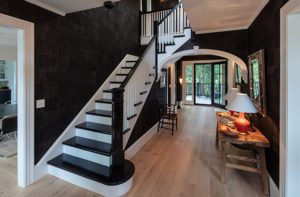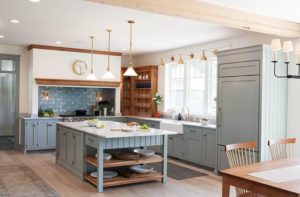Steve Fuller: Patriot’s Day Architecture
April 10, 2012
In just a few days, Massachusetts and Maine will celebrate Patriot’s Day. It’s a day on which we commemorate the earliest battles in the American Revolution, although the holiday is often overshadowed by the concurrent running of the Boston Marathon.
On the night that Paul Revere made his famous ride, British troops rowed across the Charles River from Boston and marched through Cambridge, a village very politically divided. American history loves to champion the Patriots who fought off the British, but an equal number of colonists didn’t want independence at all, and they remained loyal to England. These were the Loyalists and, if not tarred and feathered for their political beliefs, they were chased out of town by the Patriots.
We might not consider that our architecture reflects political sentiment, but Patriot’s Day seems the perfect holiday to look at some of our local homes that very much reflected their times. On one side of this spectrum are the Loyalists’ homes that remain along Brattle Street in Cambridge.

Elmwood, built 1767, by Loyalist Thomas Oliver

Ruggles-Fayerweather house, built in 1764 by George Ruggles, was used as a hospital after the Battle of Bunker Hill.
These homes are great examples of colonial Georgian architecture with their strong symmetry, centered front door, two chimneys and a low-pitched roof sometimes concealed by a balustrade. They are steeped in the traditions of the past, reminders of the country they left behind. These homes weren’t interested in independence; they were a tribute to King George. They were monuments to the benefits of maintaining a connection to Britain, its economy and its extensive trading fleet.

Hooper-Lee-Nichols house, portions built as early as 1685 and renovated in about 1770 to reflect the more popular Georgian style

George Washington slept here after Loyalist John Vassall fled Cambridge. The home became Washington’s residence and headquarters during the American Revolution. It later became the home of poet Henry Wadsworth Longfellow, whose poem made famous the midnight ride of Paul Revere. You can tour the house and gardens of the Longfellow National Historic Site–click for more information.
After the American Revolution, and particularly after the War of 1812, America sought to distance itself from all things British. It quickly identified with Greece and its own struggle for independence and its longstanding democratic ideals. Americans fell in love with all things Greek, and we applied its aesthetic to everything: churches, courthouses, office buildings, mansions and even the humblest of homes. This was a style for every purpose and for every American.

Memorial Church, Harvard University

Although Cambridge has some pretty spectacular Greek Revival architecture, like the Registry of Deeds and the Greek Revival portico of Memorial Church at Harvard University, most of our Greek Revival architecture in Cambridge are homes tucked in the urban landscape.

If you were to travel along the streets of the city, these homes reveal themselves by the pattern created by their columned porches.
These Greek Revival homes are our “Patriots.†They declare their independence. Massive corner boards support a triangular pedimented gable to mimic a Greek temple.

The Greek Revival style when applied to even the humblest workers’ cottages creates an impressive show of strength. Since it was used on so many different types of structures, the Greek Revival style is truly America’s style.
I’m sure many communities across New England have wonderful examples of both Colonial and Greek Revival architecture. Fortunately these architectural Loyalists and Patriots can coexist in the same town and we can appreciate both of their viewpoints.
Happy Patriot’s Day!
–Steve Fuller
Steve Fuller is a Cambridge resident and author of An Urban Cottage blog about restoring his 1842 Greek Revival cottage, art, cooking and life in New England.
Share
![NEH-Logo_Black[1] NEH-Logo_Black[1]](https://www.nehomemag.com/wp-content/uploads/2022/08/NEH-Logo_Black1-300x162.jpg)








You must be logged in to post a comment.